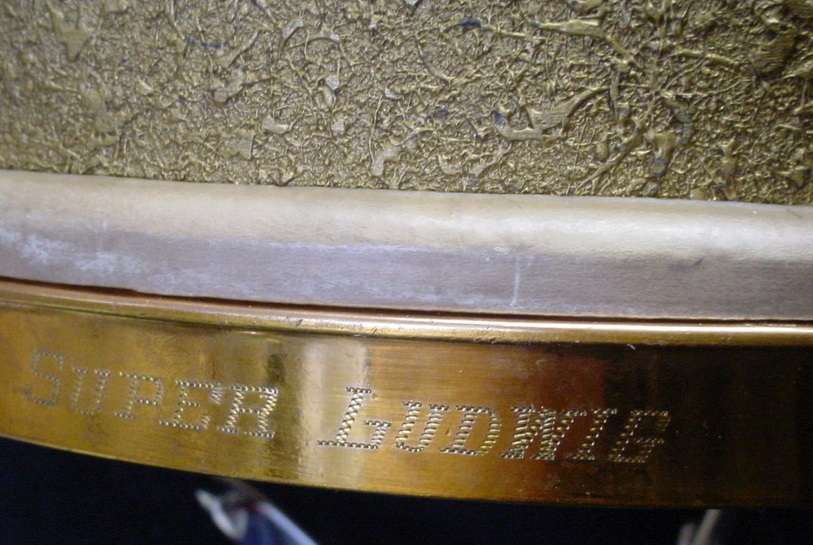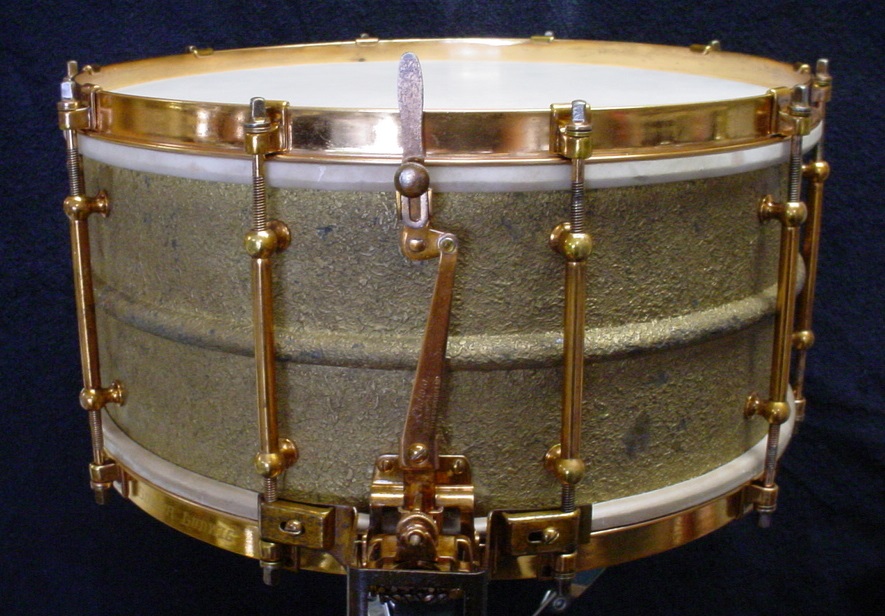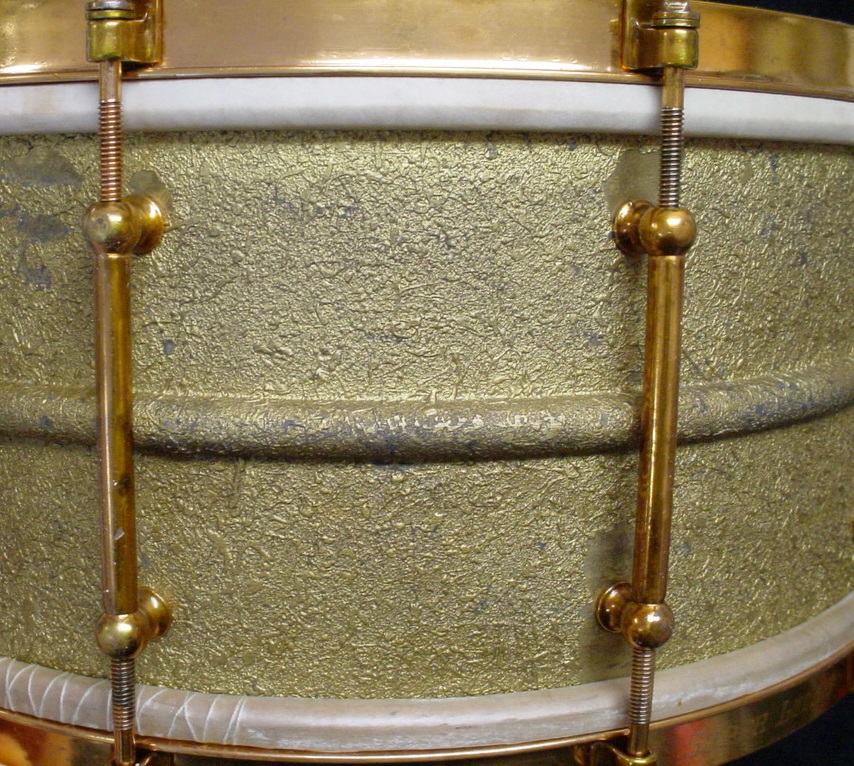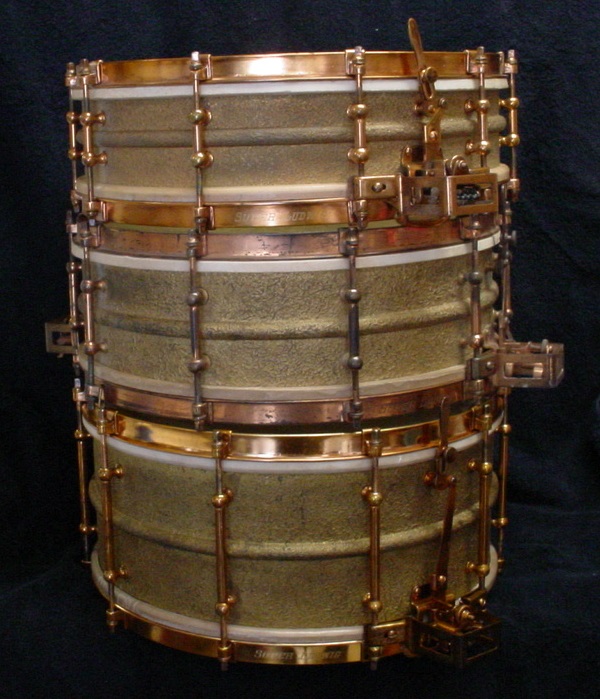Hi all, I got this snare drum from a dealer in Japan. Tetsuya made me a fair deal so I jumped at the chance to fill a gap in my collection.
A LITTLE HISTORY:
Ludwig introduced the new Stipelgold finish in their 1926 catalog. “The New Ludwig “STIPELGOLD” finish is a special composition producing a marvelous *“Stippled” effect in a bright golden hue. It is hard and durable, adhering tenaciously to the shell of metal or of wood.” The 1927 catalog introduces the “New Ludwigold Iridescent Display Finish”. It looks like the Stipelgold finish was short-lived, maybe 1-2 years. Aside from the 1926 catalog, the only other reference to the Stipelgold finish is at the bottom of the first page of the 1927 catalog: “LUDWIGOLD or STIPELGOLD at the same price.” So as best as I can tell by researching the 1926, 1927 catalogs and Rob Cook’s DRUM COLORS THE REBEATS COLOR SWATCH BOOK; Stipelgold was only around for one year, 1926.
*stipple
noun, Also, stippling
2. the method of painting, engraving, etc., by stippling.
3. stippled work; a painting, engraving, or the like, executed by meansof dots or small spots.
v.
1670s, from Dutch stippelen "to make points," frequentative of stippen "toprick, speckle," from stip "a point," probably ultimately from PIE root*st(e)ig- "pointed"
THE SHELL:
The Stipelgold finish on this drum shell shows the normal age/patina/gunk/schmutz but the finish covers the vast majority of the shell. Although Ludwig states: “It is hard and durable, adhering tenaciously to the shell of metal or of wood etc...” I have seen and own a couple of Stipelgold drums that have a few “divots” in the shell. This 90 + year old snare drum shell has a few small “divots” but is well preserved. I was able to get a layer or two of schmutz off of the shell using some Oxy-Clean foaming cleaner, it did freshen up the shell a little.
THE HARDWARE:
The DeLuxe plated hardware had a lot of tarnish on the brass parts and some rust on the steel parts where the original factory lacquer had worn off. I was able to save the original copper plating so everything cleaned and polished up nicely. All of the hardware is original, nothing was missing. The Super mechanism works perfectly. The drum came with original snares that were pretty thrashed but I had a set of Super snares in my stash. The top and bottom calf heads are of-the-era.
FINAL THOUGHTS:
Those of you who know me are well aware of the fact that I like to collect “sets” of snare drums, e.g. 4 x 14, 5 x 14 and 6.5 x 14 etc. I own a 4 x 14 and a 5 x 14 Stipelgold Super-Ludwig so when the opportunity came along to complete the set I went for it. It seems that 10-lug, 6.5 x 142-piece heavy brass snare drums from this era (1925-29) are pretty rare. I also added a photo of the completed set of Stipelgold Super-Ludwigs.
As always, I welcome your comments, stories and photos.
Enjoy!
Mike Curotto






